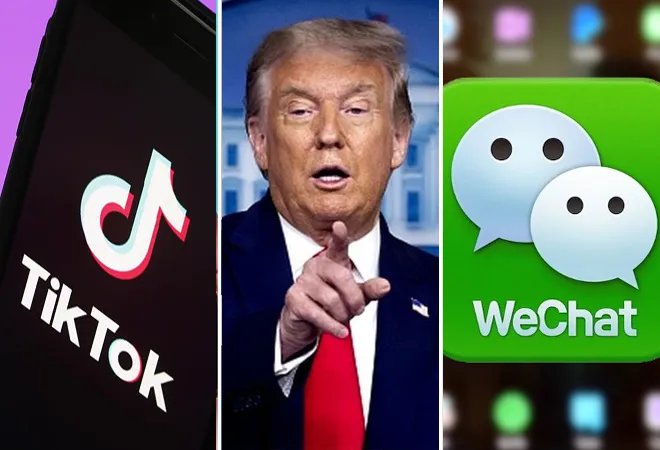
Following in Indian Prime Minister Narendra Modi’s
footsteps, the US President Donald Trump has banned two Chinese apps — WeChat from 20 September 2020 and TikTok from 12 November 2020 — from the US. As per an 18 September 2020 US Department of Commerce
release, the US has prohibited the two apps from being downloaded by American citizens. The reason, as in the case of India, is security. The apps collect “vast swaths of data from users, including network activity, location data, and browsing and search histories. Each is an active participant in China’s civil-military fusion and is subject to mandatory cooperation with the intelligence services of the CCP (Chinese Communist Party),” US Secretary of Commerce
Wilbur Ross said. “This combination results in the use of WeChat and TikTok creating unacceptable risks to our national security.” The CCP, he said, has demonstrated the means and motives to use these apps to threaten the national security, foreign policy, and the economy of the US.
What this means in English is that the CCP of which China’s President Xi Jinping is General Secretary, and who has weaponised everything, from trade and commerce to supply chains and finance, has now turned its private companies into weapons for a 21st century tech war. The tool to do that are four enabling provisions — Articles 7, 9, 12 and 14 — in CCP’s
National Intelligence Law that make it incumbent on all Chinese entities, from companies to citizens, to seek, collect and share intelligence with the CCP, potentially turning each entity into a spy. Further, the CCP has been using the institutions of open and democratic societies to launch its insidious actions, even as it prevents foreign companies from entering and offering similar services in China. The Chinese handles you see on Twitter or Facebook, for instance, are really members of the CCP; the citizens of China do not have access to them, or to Google, Yahoo and international media for that matter. With these bans, the US, like India, is building a wall against the
China’s digital contagion.
It’s time for this institutional cohesion of matching values to trickle down to 5G: leaders of the rest of the world, including Modi, must follow Trump in banning Huawei and ZTE. All scope of any concession or leeway that India could have given China has now been snowed under the latter’s aggressive actions in Ladakh. China’s interplay of hostility with all but two nations, Pakistan and North Korea, shows its priorities of subjugation. The rest of the world must close their tech ranks and protect their digital flanks. India, in particular.
The views expressed above belong to the author(s). ORF research and analyses now available on Telegram! Click here to access our curated content — blogs, longforms and interviews.



 Following in Indian Prime Minister Narendra Modi’s
Following in Indian Prime Minister Narendra Modi’s  PREV
PREV


